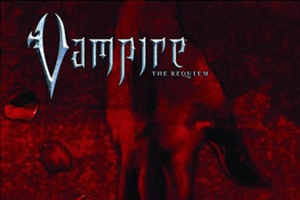"Darkness falls across the land.
The midnight hour is close at hand.
Creatures crawl in search of blood,
To terrorize y'all's neighborhood."
The midnight hour is close at hand.
Creatures crawl in search of blood,
To terrorize y'all's neighborhood."
Vincent Price, from Michael Jackson's Thriller
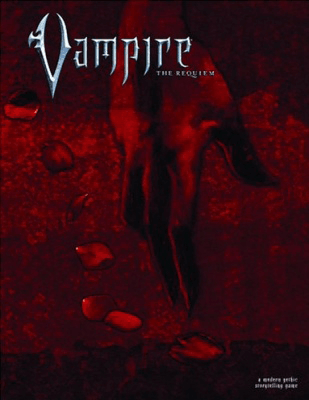 In the beginning, there was the Story, and the Storyteller
looked at it and saw that it was good. And he looked upon the
Darkness and saw that it filled the Story, and it too was good.
But like all good things, the Story came to an end. Now a new
Storyteller has come to tell a Story, and we can gaze upon the
Darkness anew with marvel.
In the beginning, there was the Story, and the Storyteller
looked at it and saw that it was good. And he looked upon the
Darkness and saw that it filled the Story, and it too was good.
But like all good things, the Story came to an end. Now a new
Storyteller has come to tell a Story, and we can gaze upon the
Darkness anew with marvel.
As of March 30th of 2004, White Wolf Publishing unleashed The End on an unsuspecting world of darkness that they created. I wrote in April about the chronicle they created to describe Gehenna, which marked the end for the Vampires who played in the Masquerade of their design.
Now, as August 21st draws nigh, White Wolf prepares to unveil a new Danse Macabre upon the eager masses chanting for a return of the World of Darkness. The new Storytelling System will be described in a 224 page hardcover tome called The World of Darkness Rulebook.
Originally this rulebook was expected to be 160 pages and retail for $19.99. However, continued refinements to the manuscript pushed the count up an extra 64 pages. This first printing will still honor the announced retail price, but a second printing will be released that bears a $24.99 price tag.
Breaking from the tradition of the past seems to be the modus operandi around White Wolf, as is evidenced in creating a separate Rulebook for the WoD itself, and creating individual rulebooks for playing the supernatural creatures that inhabit it. Their logic for this is quite sound as well as intriguing. First, they make the fair point that they have created a set of rules for one World that all the denizens will follow. This has the added benefit of not having to reiterate the rules for each genre, which also would prevent special cases for each.
But perhaps more interesting is the notion that the WoD Rulebook will also focus on the mundane mortals, their lives and characteristics before their earth-shattering discovery of becoming something supernatural. I really like this idea, not only because it defines the mortals’ role in this brave new world, but also allows for true character development.
Entering the foray along with the new WoD Rulebook in August is Vampire: The Requiem. One might at first expect that with the bulk of the rules set aside on its own that such a book would be lean. Au contraire, mon amie! Requiem will be a whopping 304-page hardcover, which will retail for $34.99. To give you an idea for comparison, the original Vampire: The Masquerade was only 270 pages long and detailed all of the rules used primarily among the genres.
So how much has changed in this new World and has anything familiar remained? White Wolf has been releasing a slow trickle of information about the rules and the clans of vampires within. They have even created a free introductory scenario to help new players get a free taste of things to come.
I have had a chance to read their daily messages and the first installment of the demo entitled “Mary’s Child”. Here is what I know so far. If you are not a fan of spoilers, don’t worry, as I won’t give away any secrets.
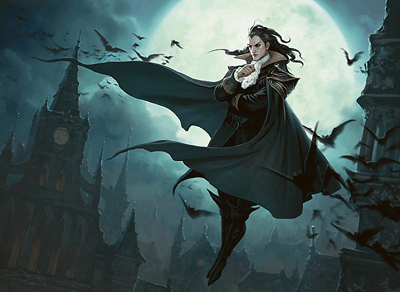 First, vampires do still abide
by the Masquerade, the pact
that many choose to accept
which dictates that vampires
must not allow non-vampires to
know of their existence. Some
vampires still don’t respect it,
but nonetheless the law is still
there.
First, vampires do still abide
by the Masquerade, the pact
that many choose to accept
which dictates that vampires
must not allow non-vampires to
know of their existence. Some
vampires still don’t respect it,
but nonetheless the law is still
there.
Second, the story telling aspect still has primary focus over game-play, and this is more so the case now. The rules have been simplified and clarified making not only table-top but live-action role-playing much more fluid. Also, it seems perhaps that the “meta-plot” as they call it is no longer present, giving Story Tellers and players much more freedom in their adventures. (It seems like one religious dogma has been replaced by another, but unless Requiem gives a large amount of background, it appears that there is no longer any overriding stories or plots to interfere.)
Third, there are still clans or bloodlines of vampires. However instead of the 13 original clans, there are only five. These five seem to be boiled down and concentrated versions of the original 13. The Gangrel, Nosferatu, and the Ventrue are the only ones who kept their name as base original traits. The other two are familiar yet unique; the Mekhet and Daeva.
The Gangrel are still the strong, more animalistic, shapeshifting gypsies we recognize from before. The Nosferatu are still the deformed, shunned, yet powerful masters of the underworld. The Ventrue are still the cultured elite, the princes of darkness.
The Daeva seem to be an evolution of Clan Toreador, the beautiful artistes and seductive passionate lovers. The Mekhet are new, yet one can find hints of Malkavians and Tremere; they are the seekers of dark knowledge and prefer to lurk in the shadows.
One might assume therefore that other clans, Brujah for example, could simply become variants from one of these. Brujah = punk Gangrel. Malkavian = insane Mekhet. You get the idea. Should you find your old clan has been brushed aside and you want to know how you fit into this new World, you might adjust to these.
Fourth, there are still organized groups of vampires, but gone are the Camarilla, the Sabbat, and all their kindred. These too have been replaced by five new covenants known as The Invictus, The Carthian Movement, The Circle of the Crone, The Ordo Dracul, and The Lancea Sanctum.
 The Invictus appears to be
an aristocratic version of what
once was The Camarilla. They
are the elders who have laid
down the Laws through the
centuries, developing the roles
of Princes for the cities. If not
for their rule, who knows what
chaos might prevail.
The Invictus appears to be
an aristocratic version of what
once was The Camarilla. They
are the elders who have laid
down the Laws through the
centuries, developing the roles
of Princes for the cities. If not
for their rule, who knows what
chaos might prevail.
The Carthian Movement is made up of the younger rebels against the strict Invictus. These are the anarchists who seek to take the power away from the stagnant leadership they believe holds the Kindred back. They could perhaps be compared to the Sabbat, but not a direct equivalent.
The Ordo Dracul is a curious order which claims lineage to Vlad “Dracula” Tepes. The order believes that nothing, not even vampirism, is permanent. They follow various paths to enlightenment that claim to help diminish some vampiric traits. They seek to share knowledge with all Kindred so that they might some day succeed in completely removing the Curse.
The Circle of the Crone are the shadowy mystics and dark magic practitioners. They believe the blood is the source of their power and will use it for their ends. Essentially they are vampiric practitioners of any pagan religion, from everything from witchcraft to voodoo. This will often put them in direct conflict with the next covenant.
The Lancea Sanctum is quite possibly the most ingenious and devious covenant of all. This is actually an offshoot of Roman Catholicism, which believes that their vampirism is a curse passed on to them by God himself. But they believe that their faith can help them shake off their sin and perhaps retain their humanity, and therefore save their souls. The name is Latin for “Holy Spear”, and is named after the spear that the Roman centurion Longinus used to pierce Christ’s side as he died on the cross. According to their legend, some of Christ’s blood spilled onto the centurion, and this blood cursed Longinus with eternal life.
Finally, there are the dice rolls and the rules themselves. Probably the most important change to the game playing aspect of the system is how rolling success dice has changed. Dice rolls have been simplified into rolls of a pool of no more than ten 10-sided dice (10 d10). How a pool of dice is made up is determined by your attributes, skills and the difficulty of a situation.
Successes are no longer dependant on achieving a minimum number of successes. Instead, if any die rolls an 8 or higher, then the whole action is considered a success (but the more you get can imply greater success.) They do allow for a roll of a 10 (or 0 on some dice), to present a chance to roll that die again to attempt to get another success. Only in rare cases is this really worth it since a single success means you succeeded, but there may be special circumstances, like a fight where this is desired. In a regular roll, however, the concept of rolling a 1 to botch, or remove a success, is not present.
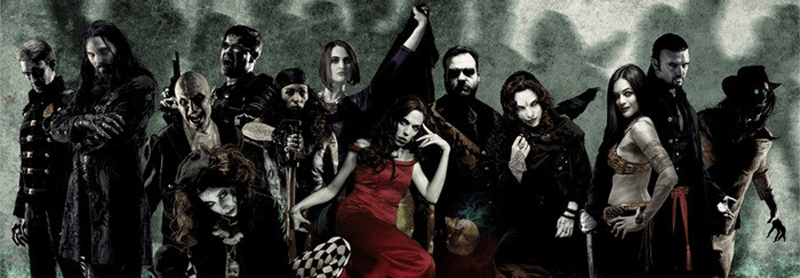
To give an example, your character needs to make a fast getaway so he decides to steal a car. He might have to roll Dexterity + Larceny, and let’s say your character has only 2 and 1 points respectively. You can therefore roll 3 dice to determine if you are successful in hotwiring the car. In the old WoD, the chances for success here might be slim, but in this new system, so long as one die comes up as 8, you succeed. If there happens to be an inherent difficulty in this action, say the car is in a well-lit parking garage and has an alarm system, this might modify your roll by subtracting two dice from your pool; or if the car is parked in a dark alley and is left unlocked, this might add two dice to your roll.
But if there is a case perhaps that the modifiers reduce your pool to having no dice, you can roll a single “chance die”. If you roll a 10, then your action is successful. Any other number is a failure. But even worse, they do include the chance to botch the action by rolling a 1, in which case this is a dramatic failure. So let’s say you were successful in starting the car, but now you need to drive fast and getaway. So you would need to roll Intelligence + Drive, but your points are 1 and 0 respectively, and the car happens to be a stick shift, so there’s a -1 modifier, leaving you with no dice left in your pool. You will instead roll a chance die, which sadly comes up as a 1. This perhaps means you succeed in driving away and then crash the vehicle and have to start all over again, wasting your time and improving your chances of getting caught.
Regarding the new rules, not all of them have been explained, and the ones detailed in the story “Mary’s Child” apply to the situations they encounter, and they don’t list other possible attributes. I don’t know yet which ones are different, but so far, since Attributes, Skills, blood points, and damage points all still exist, I’ll presume much of this is the same, or simplified if different.
One interesting note however, is the lack of a Generation, or age of the vampire character, on the character sheet. This would seem to imply that, at least those characters being played by us, everyone starts out as young, inexperienced whelps when they become a vampire, and have to earn experience to gain greater powers. This was the case before, but in Masquerade, there was the idea of 13 generations of vampire, and the older the vampire was, they could “trade up” into greater powers.
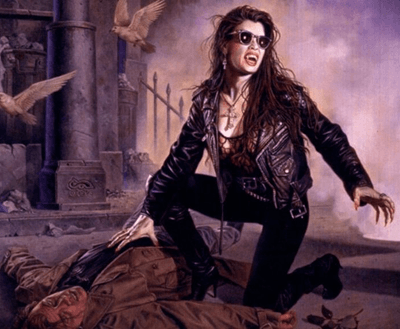 This of course was probably
removed because too often a
player would design a 7th generation
Antediluvian, or ancient
vampire, and go around kicking
everyone’s ass. This is no fun,
and usually when I was Storyteller,
no one could be older than
10th generation. But it does
raise an interesting question.
This of course was probably
removed because too often a
player would design a 7th generation
Antediluvian, or ancient
vampire, and go around kicking
everyone’s ass. This is no fun,
and usually when I was Storyteller,
no one could be older than
10th generation. But it does
raise an interesting question.
Certainly we are all aware that an ancient vampire either inherently has greater powers or have at the very least been around long enough to experience more and therefore have earned said powers. Other than creating a character and explaining this, through story of course, how they earned their experience, I don’t know how to justify how perhaps the Prince of a city, for example, is supposedly stronger and/or smarter than those who tolerate his rule. We shall have to see about this in detail when the book is released.
Another fascinating new twist to the Requiem is The Predator’s Taint. If you ever watched a Highlander movie or the TV show, you might well equate this with the Buzz – that inherent sensation that your fellow predator is nearby and you should prepare for battle.
In Requiem, it dictates that each Vampire can sense one another, and depending on the power of your fellow Kindred, you might either be overpowered by your fear, or be bold and prepare to defend yourself. It is an intriguing concept which is tied to the Frenzy in the System, where the Beast Within essentially overpowers you and your instincts take control. As before with Frenzy, you can roll dice to determine if you succumb to the Frenzy, or if you maintain your cool.
I like the idea of the Taint, however, I wonder how distracting it will be that every time you encounter another Kindred that you should have to roll dice to make sure you do not run away or bare fangs and attack.
In the end, I’m eager to see both books. I have come to enjoy White Wolf’s Storyteller system in the past, for their ground-breaking concepts, delicious artwork, and enthralling stories. Getting together with friends to escape from reality every once in a while is also something I have come to enjoy. The new system seems to value the creativity of a gothic story even more than before, and I wish them great success with their new line.
Originally published in Acrimony Magazine Issue #12 August 2004



